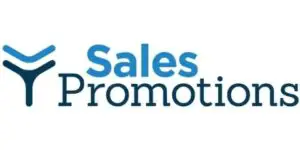Table of Contents
*This post may contain affiliate links. As an Amazon Associate we earn from qualifying purchases.
Here is a cautionary tale about losing balance between brand image and consumer promotions by not listening to your internal and external customers. My buddy had his perfect job, Director of Marketing for a west coast ski resort known as the coolest place for extreme terrain. It all changed when new management made things gnarly.

Marketing stints at some of the world’s most well-known travel industry brands gave him the insight to build a powerful brand image, while balancing a targeted sales promotion campaign that added value, determined by listening to customer wants and needs.
The sales and marketing team worked hard to build the resort’s image around the concept of ‘extreme fun’ at every point-of-connection. Excited anticipation filled you while ascending the lift over rocky cliffs hearing whooping and yelling on the slops, and the distant sound of the band playing at the base lodge après’ ski party.
Customers, employees and many who experienced the resorts marketing campaigns loved the place. Every day was a party!
Then new management bought the resort. We’ll call them Party Pooper Corporation. They were finance people who did not fully understand the vale of a brand.
From Fresh Powder To Mashed Potatoes
Geographically positioned near more modernized, world-renowned resorts, the sales and marketing team maintained high market share numbers for the ‘extreme fun’ brand by competing slightly on lift ticket price, and by launching highly targeted sales promotions to their many different customer segments.
One of their most successful campaigns was an ongoing trade promotion providing ski shop employees throughout the west with free lift tickets for distributing the resorts club card. In turn, retail shop employees often recommended the resort based on their own personal ‘extreme fun’ experience. The results of the club card special promotion indicated it was a huge source of new customers.
To activate the Club Card customers were required to answer data base questions. This was phase one of customer segmentation. Each segment were delivered sales promotional offers. The offers were timed to benefit the resort during low season, and offer a real value to members that took advantage of seasonal patterns. The process worked like a machine, driving new customers and segmentation strategies.
When the finance based management team took over their big question was “what is sales promotion and why do we need to be spending money marketing to all these segments?” Their solution was to adopt what they believed to be the Southwest Airlines model, to be known as the lowest price provider, and kill all of the segmented sales promotion campaigns. The decision was a face-plant for the resort’s future.
Slammed Hard Right Out of the Chute
The narrow based marketing plan failed miserably. The perception was that a resort that would suddenly reduce the price so much must have reduced their services, too. The general consensus was they are probably going out-of-business.

The many loyal segments of customers no longer had a relationship. The trade promotion was eliminated and so was the third party, word-of-mouth sales effort throughout the region.
Skiers per car measurement dropped from a 2.4 skier average to a 1.5 average. Bargain hunters quickly replaced the groups of ‘extreme fun’ skiers. Since parking capacity was limited, lift ticket sales declined significantly. Esprit de corps was lost forever.
What the new management company did not understand was the power of the brand. They believed they were emulating the Southwest model, however, the founder of the unique airline brand has often stated “the intangibles are more important that the tangibles.” Southwest doesn’t sell a low-priced airline ticket they sell an attitude, an idea, a brand.
The lesson learned is: before introducing a special offer pricing strategy think about how it will be perceived by the customer and the larger marketplace.
The marketing team left in the middle of the price value equation battle. After a few seasons of declining sales the so called finance geniuses sold the resort to a nearby competitor and it was merged into their operational structure.
Carving Your Niche’

Connecting with the customer takes more than a low-priced special offer. It requires that you establish your brand based a set of core values that defines you in the mind of your customer, employees and competitors. Don’t just sell a product, sell an idea. A low priced ticket is nice, but an ‘extreme fun’ experience is what skiers and boarders live for. Once your brand is established and consistently communicated, then look at what you want to achieve before introducing a well thought out and executed sales promotion plan.

